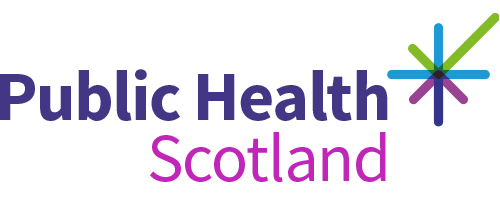Sexually transmitted infections in Scotland
2015 to 2024
Official statistics
- Published
- 01 July 2025 (Latest release)
- Type
- Statistical report
- Author
- Public Health Scotland
- Sexual health
About this release
This release by Public Health Scotland (PHS) provides data relating to laboratory diagnoses of chlamydia, gonorrhoea, and Mycoplasma genitalium infection reported to NHS laboratories, as well as testing data to the end of December 2024. Data for mpox are presented based on enhanced surveillance forms submitted by health protection teams. Infectious syphilis data are presented based on enhanced surveillance forms and submissions of high-level numbers from sexual health clinicians in the NHS boards respectively.
Main points
Chlamydia
- In 2024, there were 11,725 diagnoses of chlamydia in Scotland, down from 13,414 in 2023.
- In 2024, women accounted for 55% of chlamydia diagnoses (6,424).
- In 2024, among women, 87% of infections occurred in those under 30 years old, compared to 65% among men.
- There were 70 diagnoses of lymphogranuloma venereum (LGV) in 2024, a 2.3-fold increase from 31 diagnoses in 2023. This increase is likely related to a pilot of wider testing criteria.
- Testing for chlamydia through sexual health services increased between 2023 and 2024, but levels among those under 25 years old remained lower than pre-pandemic levels, in contrast to other age groups which have higher testing levels.
- The highest rate of chlamydia diagnoses from 2020 to 2024 was observed among heterosexual men in sexual health services.
Gonorrhoea
- In 2024, there were 4,534 gonorrhoea diagnoses in Scotland, down from 5,991 in 2023.
- Most diagnoses were among men (3,399) and were consistently higher than women across the ten-year period.
- Those under 25 years old accounted for 65% of gonorrhoea diagnoses in women, and 28% in men. From 2023 to 2024, diagnoses decreased in those under 30 years old but increased in those 30 years old and over.
- Diagnoses of rectal gonorrhoea in men, a marker for condomless anal intercourse (CAI), increased to 1,370 in 2024 from 1,186 in 2023.
- The increase in gonorrhoea in 2022 and 2023 was mainly driven by diagnoses in those under 25 years old, with 2024 showing a similar rate of diagnoses across all age groups.
- Testing was lowest among those under 20 years old, and levels among those under 25 years old remained lower than pre-pandemic levels, unlike other age groups which have higher testing levels.
- The highest rate of positive tests for gonorrhoea in the last five years was consistently observed in gay, bisexual, and other men who have sex with men (GBMSM).
- In 2024, three gonococcal isolates were resistant to ceftriaxone, compared to none in 2023.
Infectious syphilis
- Infectious syphilis diagnoses increased from 2020 to 2023, with 564 diagnoses in 2023, the highest in the last decade. In 2024 there were 523 diagnoses.
- From 2020-2024, where data was available:
- 50% presented with primary syphilis
- 84% were in the GBMSM community
- 94% were presumed to have acquired the infection in Scotland
Mycoplasma genitalium
- In 2024, there were 221 diagnoses of Mycoplasma genitalium, slightly lower than 228 in 2023.
- Between 2020 and 2024, the number of tests increased with the percentage of positive remaining stable at 13% in 2023 and 2024.
- The highest number of tests from 2020 to 2024 was observed in heterosexual men, and the highest number of positives was in men (including heterosexual men and GBMSM).
Mpox
- In 2024, there were 14 diagnoses of clade IIb mpox, compared to two in 2023 and 97 in 2022.
- Across 2022 to 2024, 38% of diagnoses were in the 30 to 39 year old age group, and 95% of diagnoses were GBMSM.
- Across 2022 to 2024, Spain was the most travelled to country in the 21 days prior to symptom onset for clade IIb mpox diagnoses, with 13 individuals reporting visits to Gran Canaria.
Background
This report presents information on chlamydia, gonorrhoea, Mycoplasma genitalium, mpox, and infectious syphilis in Scotland to the end of December 2024. It combines previously separate reports and includes data for Mycoplasma genitalium and mpox for the first time. Infectious syphilis data, not reported since 2020 due to the impact of the COVID-19 pandemic, is also included. Additionally, it presents data on antimicrobial susceptibility testing and whole genome sequencing of Neisseria gonorrhoeae isolates in Scotland. This report provides ten-year data trends and presents data observed during the COVID-19 pandemic which impacted significantly on the routes through which individuals had been able to access sexual health services.
Further information
The next release of this publication will be July 2026.
General enquiries
If you have an enquiry relating to this publication, please contact Kirsty Roy at phs.bbvsti@phs.scot.
Media enquiries
If you have a media enquiry relating to this publication, please contact the Communications and Engagement team.
Requesting other formats and reporting issues
If you require publications or documents in other formats, please email phs.otherformats@phs.scot.
To report any issues with a publication, please email phs.generalpublications@phs.scot.
